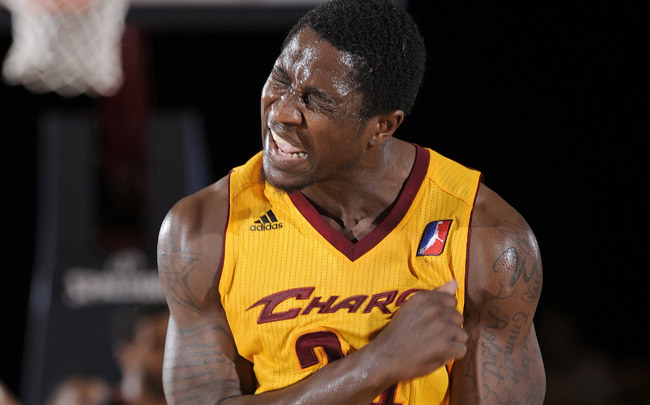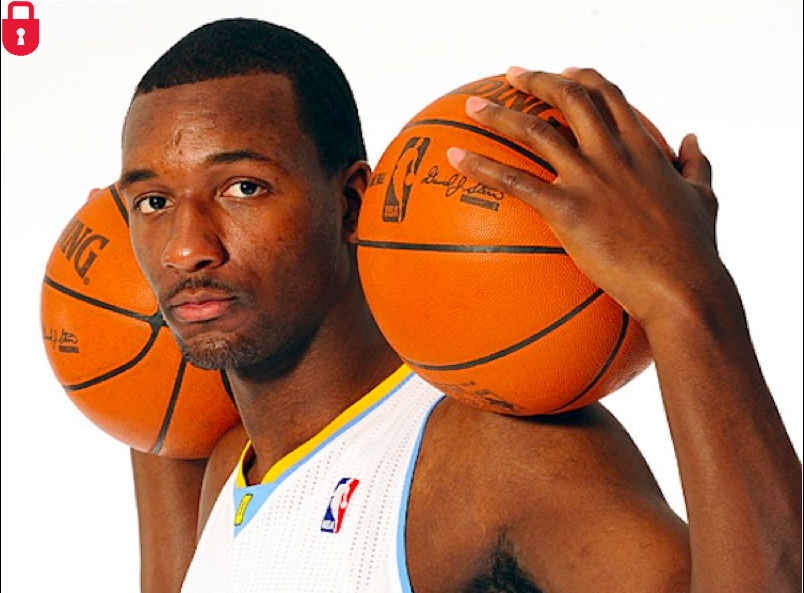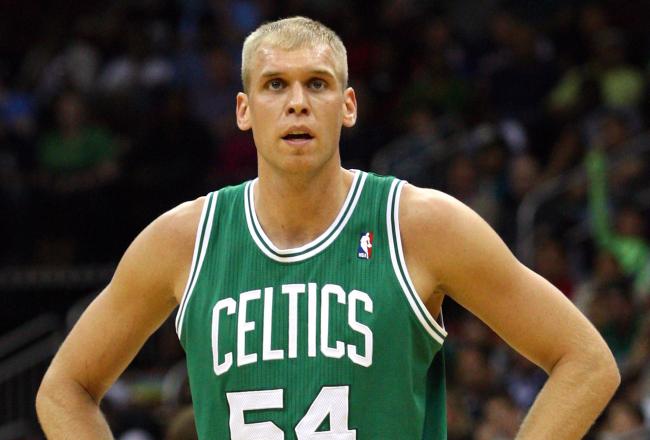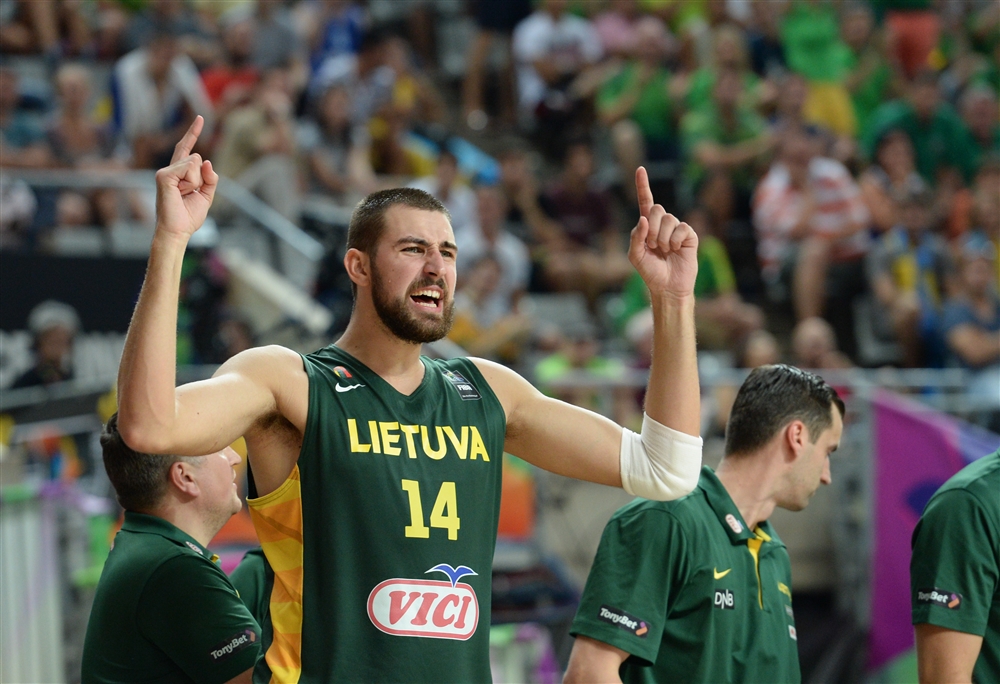The Toronto Raptors will enter training camp on Sept. 29 with 13 players on guaranteed contracts, a number that is, for all intents and purposes, 14, since there’s no way that Amir Johnson’s partially-guaranteed deal is going to be waived off the books at any point.
In a move that should surprise nobody, the Raptors have added three additional bodies on deals that are only partially guaranteed (almost surely with no little in-season guarantee [see Dan H’s comment below], and the guaranteed portion representing a de facto camp salary). Camp, then, has a three-man battle for a 15th roster spot lined up. A team is free to bring as many as 20 players to training camp, and it’s possible the Raptors will add even more bodies to the mix before camp, though a 17-man group is enough bodies to withstand even a few nicks and scrapes during the all-too-long preseason.
Each combatant in the race for the 15th spot that we’ll all care far too much about brings something different to the table, and who ultimately lands the gig will speak to how management and the coaching staff feel about certain players on the roster.
First, as a reminder, here are the 14 names that will surely break camp with the Raptors (and note that the deadline has passed for the team to use the stretch provision on Landry Fields or Chuck Hayes, though such a move wouldn’t have made a great deal of sense anyway):
PG: Kyle Lowry, Greivis Vasquez
SG: DeMar DeRozan, Lou Williams
SF: Terrence Ross, James Johnson, Landry Fields, Bruno Caboclo
PF: Amir Johnson, Patrick Patterson, Tyler Hansbrough
C: Jonas Valanciunas, Chuck Hayes, Bebe Nogueira
(Note: Earlier in the offseason, I took a very crude shot at estimating playing time given this roster.)
While guard ostensibly seems like a need laid out as such, the fact that Vasquez and Williams are both essentially combo-guards, and that Ross and DeRozan are interchangeable at the wing spots mean the depth at the two is far deeper than two names.
As a final note before looking at the players, salaries don’t really matter here. While varying experience levels mean varying minimum salaries, the collective bargaining agreement is such that veterans only count as a two-year veteran minimum for luxury tax purposes as a means of ensuring veteran jobs, so the effect is minimal.
Will Cherry, PG, D-League by way of Montana (2013)
The Raptors signed Cherry back on July 30 in a move that brought the Raptors roster to 15. While I admittedly haven’t seen more than maybe 300 minutes of Cherry playing – between this year’s Summer League with Cleveland, his time with Canton in the D-League last season, and vague memories of his Montana days – there doesn’t seem to be a lot to be excited about with the man William Lou will surely dub Trill Cherry.
What Cherry does offer is someone who can play point guard, an important consideration in the eyes of head coach Dwane Casey, who is on record as wanting a third point guard on the roster.
Working against Cherry is that the team already has two capable starting point guards and a flier in Williams who has spent plenty of time at the one in the past. While Williams isn’t a natural distributor or someone you’d be comfortable with running the entire offense for major minutes, as far as third options go he’d be more than serviceable. If Cherry were to get the 15th roster spot, it would probably signal that Casey either isn’t comfortable with Williams running the point, or that he’s still no closer to looking like Philadelphia “Mr. 4th Quarter” Williams than he was last season in Atlanta.
If you’re curious as to the book on Cherry, he averaged 12.8 points, four rebounds and three assists in Summer Legaue this year, averaged 11.6 points, 3.7 rebounds and 4.5 assists in the D-League last season, and averaged 12.8 points, 3.6 rebounds and 3.4 assists over four years in college. Nothing I’ve seen really shouts NBA player, but he’d represent a fairly safe option, limiting turnovers and providing above-average defense. Defense and ball protection are what would earn him the job in camp, two things Casey values and Cherry can provide, but I’d guess his candidacy comes down entirely to how Williams looks.
Jordan Hamilton, SF, DEN/HOU by way of Texas (2011)
If Cherry was a move to appease Casey, the team’s signing of forward Jordan Hamilton on Aug. 14 was undoubtedly a Masai Ujiri move. Ujiri selected Hamilton 26th overall on draft night in 2011 after acquiring the pick from the Dallas Mavericks, clearly seeing upside in the Compton native (so you know DeRozan is on board).
Over three seasons, Hamilton has struggled to deliver on that promise but at times flashed an enticing skillset. In 126 games, he’s averaged 5.8 points and 2.8 rebounds in just 13.3 minutes and shot 35.8 percent from long range, but he’s been hurt by an inability to hit two-point shots at a decent clip, though he’s taken 46 percent of his shots from downtown.
While it’s never smart to rely on the wisdom of experts, the fact that Ujiri and Daryl Morey have both seen something in Hamilton, and that he’s still just 23, make him an intriguing player despite the lack of performance. Along with the three, he brings good size for the three, something the team needed desperately before signing James Johnson but isn’t necessarily a weakness anymore, and he hasn’t translated that size into noticeably effective defense (yet).
As with Cherry, Hamilton’s candidacy could come down to how ready to contribute a guy like Bruno Caboclo looks, or how a Landry Fields looks ahead of a make-or-break season. Ujiri very clearly sees something in Hamilton, but Hamilton’s in a tough spot – he isn’t quite as productive as the team surely expects Johnson to be, and while he has upside remaining, Caboclo is the key development project on the wing.
Greg Stiemsma, C, NO/MIN/BOS by way of Wisconsin (2008)
The latest signing may be the most interesting one, with the Raptors inking Greg Stiemsma on Sept. 14. Stiemsma not only has the hardest name of the three to spell, annoying me immediately, he is also the most established of the three players, albeit the one with the least upside.
Already 28 years old despite just three seasons in the league (he played overseas and in the D-League for three years after a four-year college career), Stimesma is what he is at this point. What he is is a 6-foot-11, 260 pound shot blocker who offers almost nothing else.
In 186 career games, Stiemsma has 232 blocks, good for 1.2 a game, 2.8 per 36 minutes and 4.1 per 100 possessions. His block percentage is the fifth-highest among players with 1,000 minutes played in that three-year span, trailing established rim protectors Serge Ibaka, JaVale McGee, Larry Sanders and Chris Andersen. Further, Stiemsma held opponents to a respectable 51.5 percent shooting mark at the rim.
That is a skill, and a valuable one, so one wonders why he’s available on a camp deal. Well, Stiemsma has averaged just 3.4 points and 3.6 rebounds in 16 minutes as a pro. He has shot 63.8 percent at the rim, somewhat unimpressive for a near 7-footer, and is essentially unusable on offense beyond that distance.
With his limited utility established, his ability to protect the rim in spot minutes at the five means that he’s the favorite to land the 15th spot. The Raptors have three centers, but one of those is the ground-bound Hayes and another is the largely unproven Nogueira. If Valanciunas were to suffer an injury, the only option who could be relied on to provide rim protection would be Amir Johnson, in what would be a sub-optimal use considering his talent defending the four and on the move.
In short, while the roster position breakdown may suggest otherwise, in terms of functional role on the team, Stiemsma is the most obvious peg to fill a hole (I’ve used “fill a hole” too many times now, it’s uncomfortable).
Hamilton and Cherry seem like decent pieces, and the former in particular probably belongs on an NBA roster for another season or two to make good on the upside, but the Raptors are already carrying two developmental projects in the Brazilians. Over the course of an NBA season, a team is going to need 13 contributing bodies in all likelihood, and that has to give Stiemsma an early edge.
A lot can change between now and the season opener, and performance in camp will surely count for a good deal, but early signals suggest Stiemsma would be the logical choice.






